Can You Put Ceramic in the Oven? Check the Symbol
Author: Anne Cowart | Editor: Omar Alonso
Review & Research: Jen Worst & Chris Miller
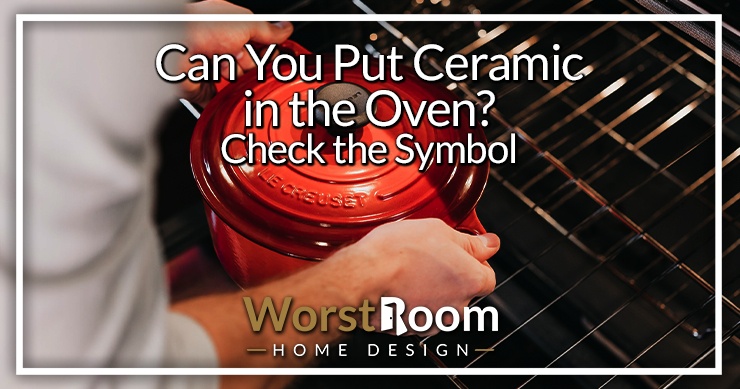
Are you about to put a casserole in the oven? Are you sure that ceramic cookware is up to the task of enduring high heat? Can you put ceramic in the oven?
When you’re low on cookware, it’s tempting to grab any bowl in the cupboard and use it as an oven dish, but is it the right choice? Is the oven bowl safe, or will you end up with a disaster on your hands and a ruined meal?
Do you know how to check if a bowl is oven safe? If you don’t know what you’re looking for, it’s just the luck of the draw, and that decision could end up being a costly mistake.
This post unpacks everything you need to know about ceramic cookware and oven safety. We’ll discuss how to identify oven-safe ceramics and how to choose the right cookware when buying a new set.
How Do You Choose Oven-Safe Ceramic Cookware?
Whether you’re a chef in a world-class restaurant or just cooking a meal for your family at home, you need the right cookware for the task. Ceramic cookware is a popular choice for the kitchen due to its durability and versatility. Most ceramic cookware is over-safe, but there are exceptions.
The last thing you want is to purchase an inferior cookware set for your kitchen. The results could be disastrous for your cooking experience. Not all ceramics are oven-safe in all types of ovens. High-fired ceramics are the best choice for your new cookware set, but how do you distinguish between the types of ceramics available in cookware products?
What Is Ceramic Cookware?
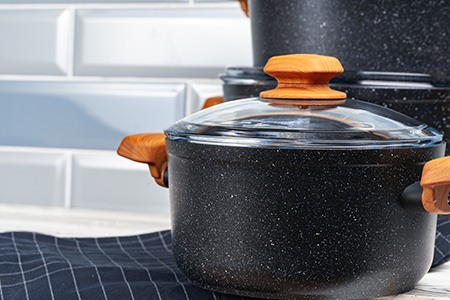
Ceramics is a non-metallic and inorganic material. 100% ceramic cookware is made using molded clay materials and finished with an organic ceramic glaze. It's lightweight and usually pressures cast to give it exceptional strength and superior heat resistance compared to other cookware materials.
Manufacturing brands will pressure cast their cookware and triple-fire it, curing their ceramic at incredibly high temperatures as high as 2,500 °F for a hardening effect that's temperature resistant. The result is cookware ready for use in the oven at the hottest temperatures.
Some cookware manufacturers use a ceramic coating over a steel pot or pan. The ceramic coating provides a non-stick surface while retaining excellent strength. It's a great alternative to PTFE-coated non-stick pans that might lose their coating over time.
What Does an Oven-Safe Symbol Look Like?
If you're looking at purchasing an oven-safe ceramic cookware set, or you're grabbing a bowl out of your friend's cabinet to stick in the oven, check for the oven-safe symbol on the cookware. The icon looks like an oven heating food. Similarly, microwave-safe types of bowls will have a logo featuring a microwave heating a food tray.
If you're buying new cookware, the packaging on oven-safe products features a number inside the oven window of the oven-safe symbol. These numbers indicate the maximum temperature rating of the cookware. If the logo has no numbers in the window, it's usually rated safe for oven temperatures up to 350 °F.
Most cookware manufacturers advertise products as oven-safe on the packaging. They'll have wording on the packaging advertising it as oven-safe. Professional-grade cookware products are usually oven-safe at temperatures up to 500 °F. These products are also safe to use in a broiler.
Look at the Bottom of The Ceramic Bowl
If the packaging doesn't reveal if the cookware is oven-safe, you can check the underside of pots and pans for the oven-safe symbol. If the manufacturer doesn't use the logo mentioned above, they might stamp "Oven-Safe" on the bottom instead.
Can ceramic bowls go in the oven? Yes, if you find this symbol on the packaging or bowl itself. Can ceramic plates go in the oven? Yes, most of the time, but you need to confirm it by seeking the symbol unless you're willing to lose a piece of a set by testing it out first.
Check the Grade of Cookware Materials
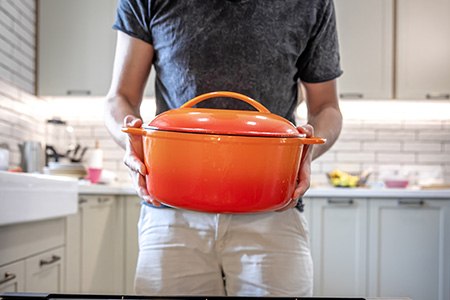
Can you put ceramic in the oven? Most ceramic cookware is oven safe, but that's not always the case. If you can't find the oven-safe stamp or rating on the packaging, it's better to err on the side of caution and avoid using it in the oven.
However, sometimes, you can tell if cookware is oven-safe just by its design. For instance, a cast iron skillet with a steel handle is likely to be oven safe. Many people opt entirely for steel cookware sets to avoid the whole "can ceramic go in the oven" question every time they pull a piece out of the cabinet.
Similarly, a dutch oven is also likely to be safe. This cookware is usually forged with cast iron and ceramic coated to ensure a non-stick surface. There are plenty of cast-iron skillets available with a ceramic coating as well.
Some people may confuse porcelain cookware with ceramic materials, but they have different properties and heat retention capabilities. Typically, porcelain can withstand oven temperatures up to 350 °F. However, we don't recommend you use it in the broiler, where it might crack or overheat.
When buying a new cookware set online, stoneware can sometimes be confused with ceramic. This material is generally oven-safe, but it's not as effective as heat-treated ceramic at very high temperatures, such as under the broiler. Typically, you'll only use this material in oven applications up to 350 °F.
If Most of the Material in Cookware Sets are Ceramic, Is it Oven-Safe?
Avoid purchasing one with plastic lids and handles if you're looking for an oven-safe ceramic cookware set. These materials melt under high temperatures and aren't suitable for oven use.
Many steel cookware sets come with ceramic glazing, but that doesn't mean they're safe for use in the oven. Always check the packaging. Look for the oven-safe stamp on the bottom of the pots and pans before placing it in under high-heat conditions in the oven.
Can Steel Melt in the Oven or Experience Damage?
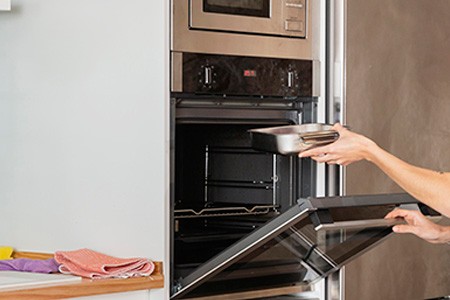
Steel cookware isn't at risk of cracking or experiencing thermal shock when removed from high heat and cooled rapidly. However, many manufacturing brands produce steel cookware with plastic handles and lids. This material isn't suitable for the oven and will melt under high temperatures.
If you're buying steel cookware for the oven, choose cast-iron skillets, pots, and especially steel types of pans (since they're typically so thin) that have a complete steel design with no plastic elements.
The Risk of Thermal Shock Explained
If you heat hardened glass or ceramic to high temperatures and cool it quickly, the material is at risk of developing thermal shock. The high temperatures heat the material, expanding it, and the cool causes it to contract quickly.
As a result, the bowl or pot cracks or shatters because the material is incapable of fast expansion and contraction. Thermal shock is responsible for failure in cookware made from ceramic, glass, and stone.
Ensure you buy high-quality cookware to avoid experiencing a thermal shock. Avoid dosing hot pots and pans in cold water immediately after removing them from the oven, stove, or microwave. Can you put ceramic in the oven? Yes, but that doesn't mean you need to cool it down immediately, either. Give it time to cool on its own in the oven or on the stove top.
Prevent temperature fluctuations creating thermal shock in your cookware by waiting five to ten minutes after withdrawing it from the heat to wash it. This strategy gives the ceramic time to cool and adjust to the room temperature before cleaning.
Is All Ceramic Cookware Oven-Safe?
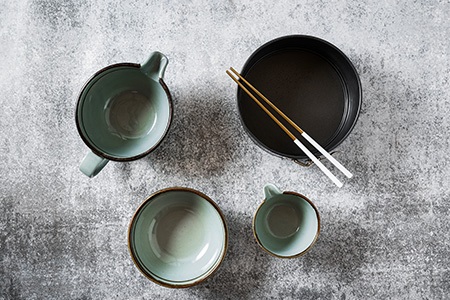
No. Unfortunately, not all ceramic cookware is oven-safe. Don't assume that just because the pot or pan is ceramic, you can place it in the oven and walk away. While most ceramic cookware is suitable for oven use, not all products undergo the same high-temperature hardening process.
Some ceramic bowls are only suitable for general use in cooking. If you place the ceramic in the oven and it's not oven-safe cookware, it'll result in the bowl, pot, or pan cracking. At very high temperatures, like under the broiler, the ceramic might melt or catch on fire, presenting a severe safety hazard to the home.
FAQ’s Regarding Oven-Safe Ceramics
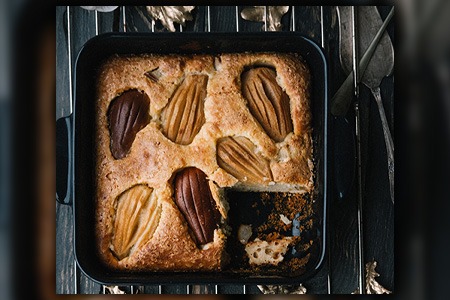
When the topic of whether or not ceramic can go in the oven comes up, there’s always a similar set of questions that arise. Let us deal with those now in case you’re also wondering the same.
Is a Pyrex Bowl Oven-Safe?
Pyrex glass, also known as "borosilicate" glass cookware, is similar to ceramic. It undergoes a high-temperature hardening process making it suitable for placing in the oven and microwave. However, most Pyrex bowls don't come with handles or lids.
Placing a Pyrex bowl with a plastic lid in the microwave is a bad idea. The plastic may release phytoestrogens into your food, that damage your health. Look for microwave-safe plastics when using them in the microwave. Don't use plastic wrap in the microwave; it's a big source of phytoestrogens.
Are Oven-Safe Ceramic Bowls Microwave Safe?
Not all oven-safe ceramic cookware or oven-safe Pyrex is microwave-safe. If you can't find the microwave-safe symbol on the cookware, don't risk putting it in the microwave. It's common for cookware that's not suitable for the microwave to get extremely hot in a short time.
It cools and might crack due to thermal shock when you take it from the microwave. You'll also notice that non-microwave-safe cookware won't heat your food evenly in the microwave.
Can I Use Ceramic-Coated Steel Cookware in the Oven?
Yes, you can use ceramic-coated steel cookware in the oven. However, many brands adopting this design approach use plastic handles on pots and pans. This material isn't safe for the oven and will melt.
Is Ceramic Oven-Safe? Can You Put Ceramic in the Oven?
Most ceramic cookware is oven safe. As long as you've checked for the oven-safe symbol on the cookware or the packaging, you can stick it in the oven. Avoid placing cookware with plastic handles in the oven, as it will melt the plastic away and potentially start a fire in the oven.
Most ceramic-coated steel cookware is safe for oven use, but watch out for those plastic features. So can you put ceramic in the oven? Yes, if you confirm it's oven-safe (most are). Enjoy your meal, bon appetite!




